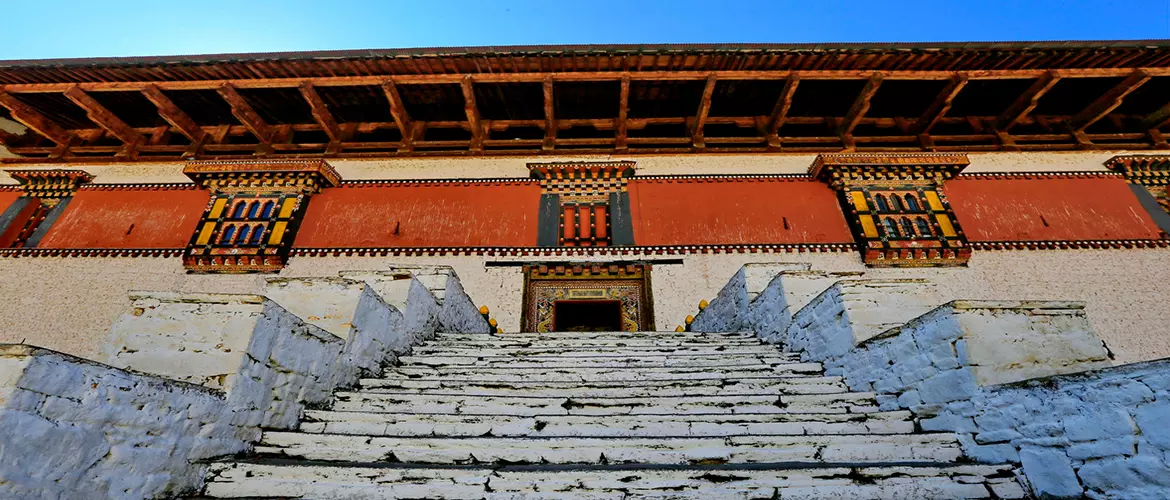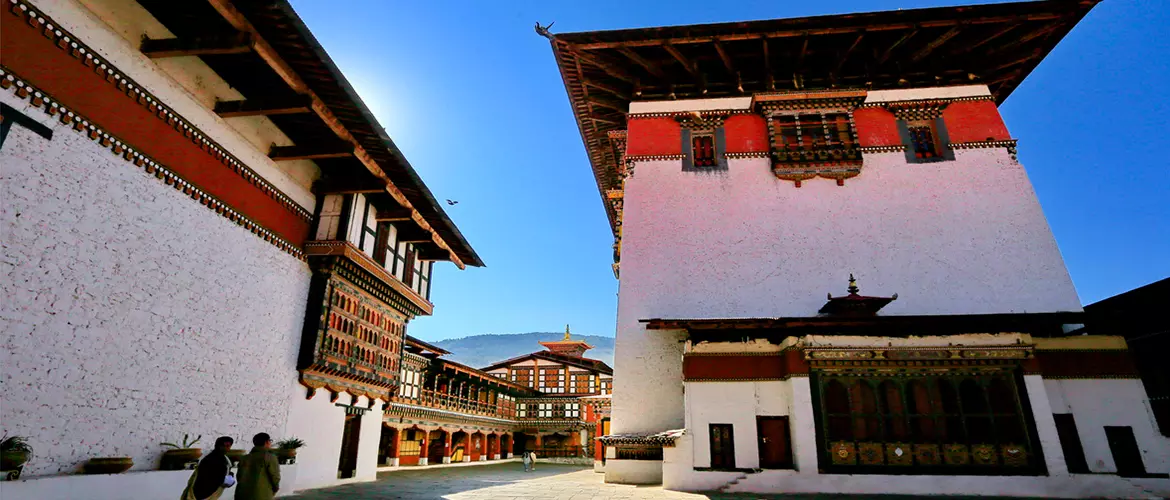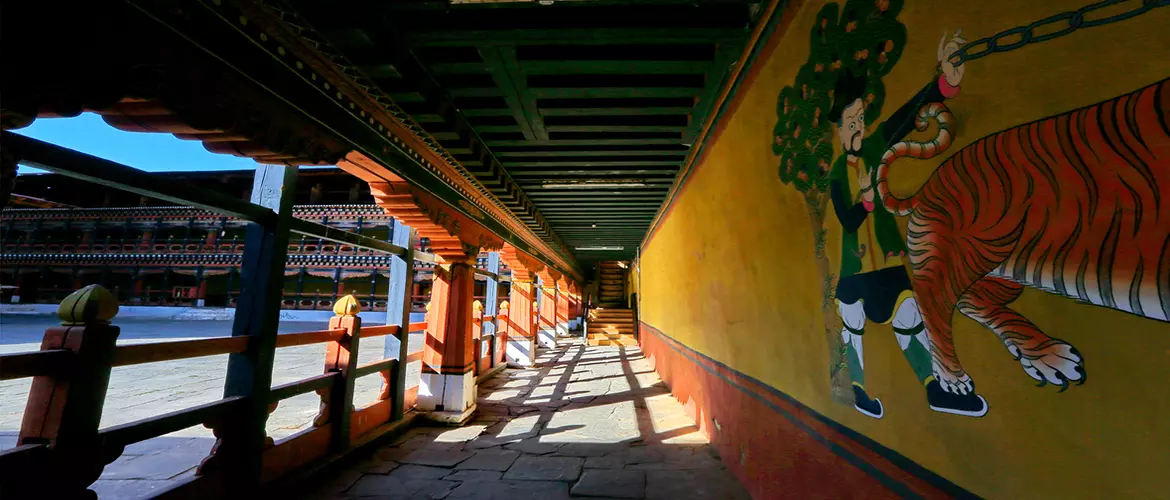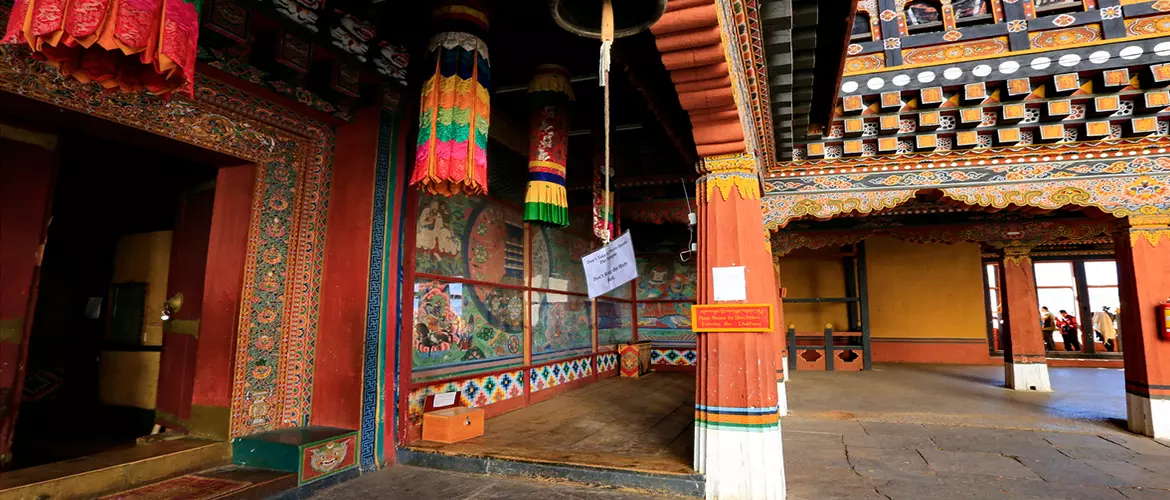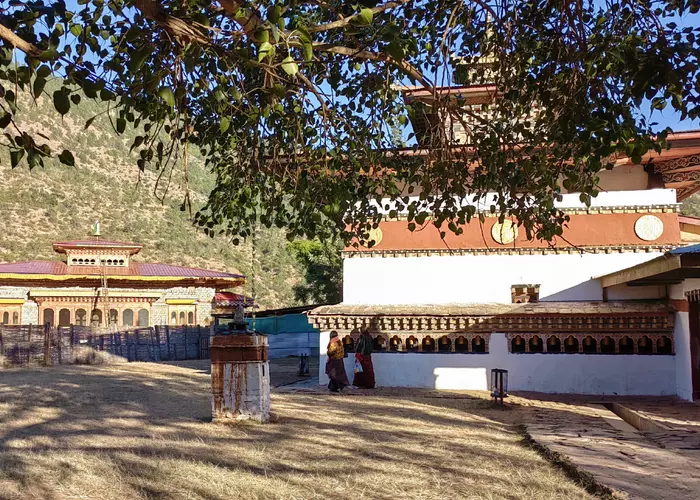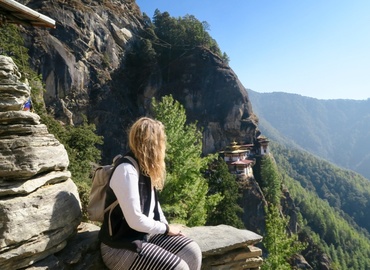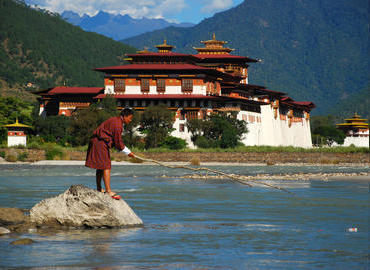Paro Dzong, also called Rinpung Dzong according to its origin, means “Fortress of Heap of Jewels”. It is one of the most popular major tourist attractions in Paro and perhaps the best example of Bhutanese architecture you will see. Paro Dzong is located on a steep cliff, with stunning views of the Paro Valley and the Paro Chhu, close to the only International airport in Bhutan - Paro Airport and there is only a 15-minute walk from the main town of Paro.
It was used as a fortress to defend the Paro Valley. Like other fortresses in Bhutan, Paro Dzong is a Buddhist monastery and also performs some government functions. Its predecessor was the offices of local government, including the meeting hall for the National Assembly and the local court. The famous Bhutanese movie "Little Buddha" was filmed here. About 200 monks are still living there, and the auditorium in the southeast corner of the temple is where they have daily meals.
Historic Origin
According to popular legend, the Tibetan Guru Rinpoche, commonly known as Padmasambhava, visited the site in the eighth century. The Tibetan master saw the high limestone plinth and predicted that it would one day become the foundation of a dzong and dubbed it "Rinpung Drak" ("cliff of the Heap of Jewels"), from which the dzong got its current name. In the 15th century, locals offered the crap to Lama Drung Drung Gyal. This Buddhist notable built a small shrine there and later enlarged it to a five-story fortress which was known as Hungrel Dzong.
In 1644, it was enshrined to Ngawang Namgya(Zhabdrung Rinpoche), the first theocratic leader of Bhutan. As the Zhabdrung Rinpoche had sufficient authority to demand the finest materials, his architects tore down the old Hungrel Dzong--which was mainly made of rammed earth walls, replacing it with a larger stone structure. Construction took about five years and resulted in the current form of the monastery we see today. Perhaps to distinguish it from the previous structure, it became known as Rinpung Dzong.
Architectural Features
Paro Dzong is one of the largest and most beautiful Dzongs in Bhutan in terms of architecture. It is a complex of courtyards, temples, administration offices and open spaces surrounded by towering walls. All the buildings are equipped with huge windows with elaborate wooden carvings of traditional Bhutanese patterns. In addition, the cream-colored exterior, attractive bright colors and more than a dozen shrines are highlights of this exquisite monastery. Inside the shrines, ancient Buddhist relics and various gods are worshipped.
Paro Dzong has an elegant and harmonious structure, as well as a long history. Like other buildings in Bhutan, no steel material or iron nails have been used in its construction. The inner courtyard is colorful and vibrant. The central tower, called Utse, is five stories high with imprinted beautiful religious figures on it. The paintings inside the dzong are a paradise for art lovers. Each painting tells its own story which is a marvel to behold! There is also a collection of Bhutanese treasures - Thangka - Thongdel. It is a religious scroll painting made of silk and cotton. It can be called the largest and most exquisite masterpiece of Bhutanese art. The protagonist in the painting is Padmasambhava, who introduced Buddhism to Bhutan, along with his two wives, Mandarava and Yeshe Tsogyal. Buddhists in Bhutan believe that as long as people pay homage to Thongdel, they can achieve Nirvana.
The Dzong’s watch tower is considered one of the most beautiful buildings. It has now been built as the National Museum of Bhutan, which has in its possession over 3,000 works of Bhutanese art. The unusual round appearance of the building is said to be in the shape of a Buddhist auspicious instrument--a conch. The museum is divided into six floors, with different cultural relics on each floor, including religion, national development history, stamps, old photos, production and life, animals and plants, etc.
Paro Tshechu
The stone-paved festival grounds outside the dzong are home to one of the country's most popular festivals-- Paro Tshechu, held every spring here. According to the traditional Bhutanese lunar calendar, this celebration typically lasts from the 11th to the 15th day of the second month (usually in March or April). The celebrations begin with a charming dance in traditional costumes depicting religious folklore. On the last day, the silk statue of Guru Padmasambhava was unfolded on the wall of the fortress. Countless tourists came here to see it, and the scene was quite lively.
Travel Guide
Opening Hours: 9 am to 4 pm every day of the year.
Dress Code: Formal. Dzong is the spiritual fortress of the Bhutanese people. To enter the Dzong, the Bhutanese people need to wear very formal traditional clothes, while tourists need to wear formal clothes.
Photography: Photography is allowed till the courtyard.
Attractions Nearby: Tiger’s Nest, Drugyel Dzong
Email response within 0.5~24 hours.


